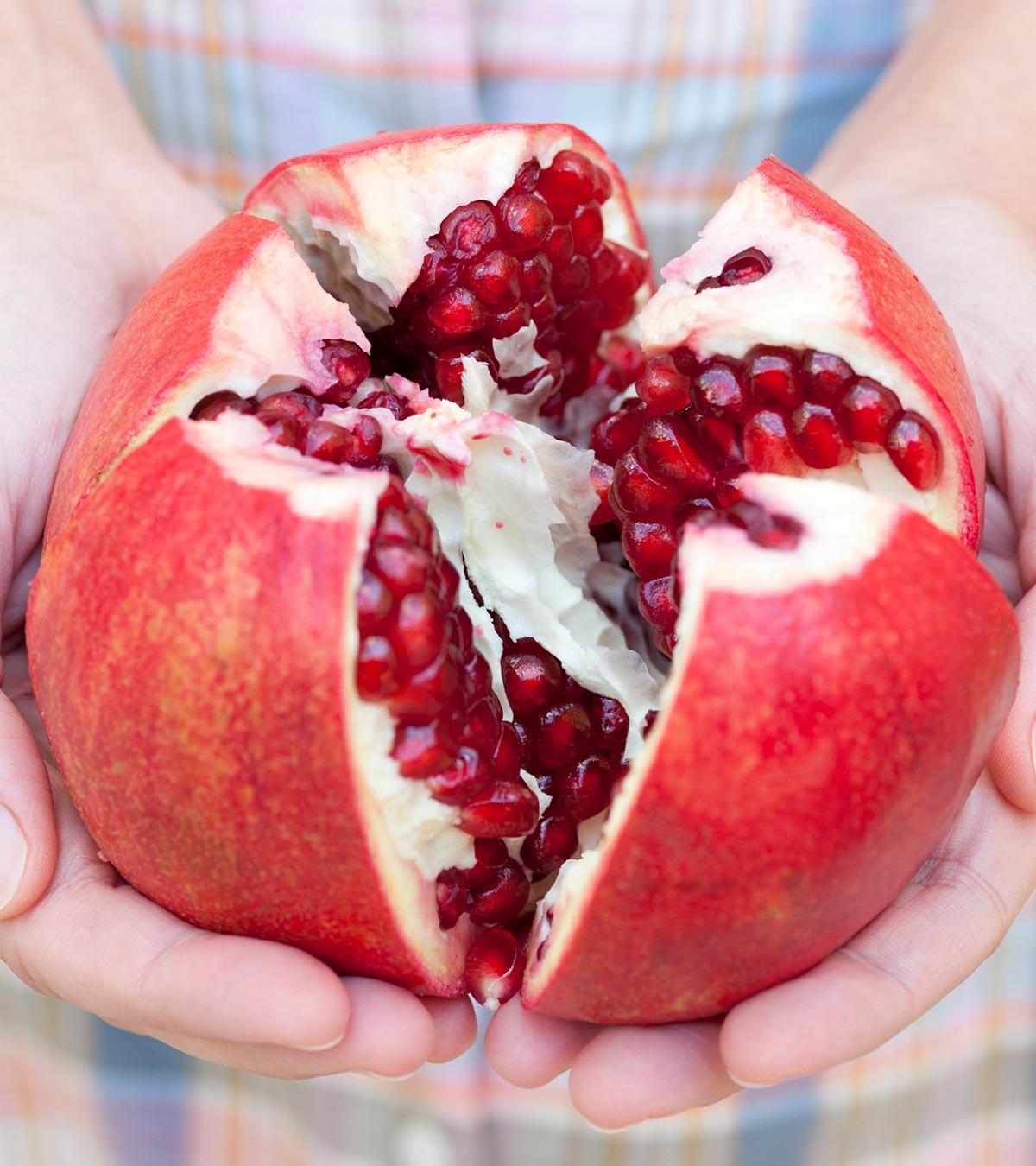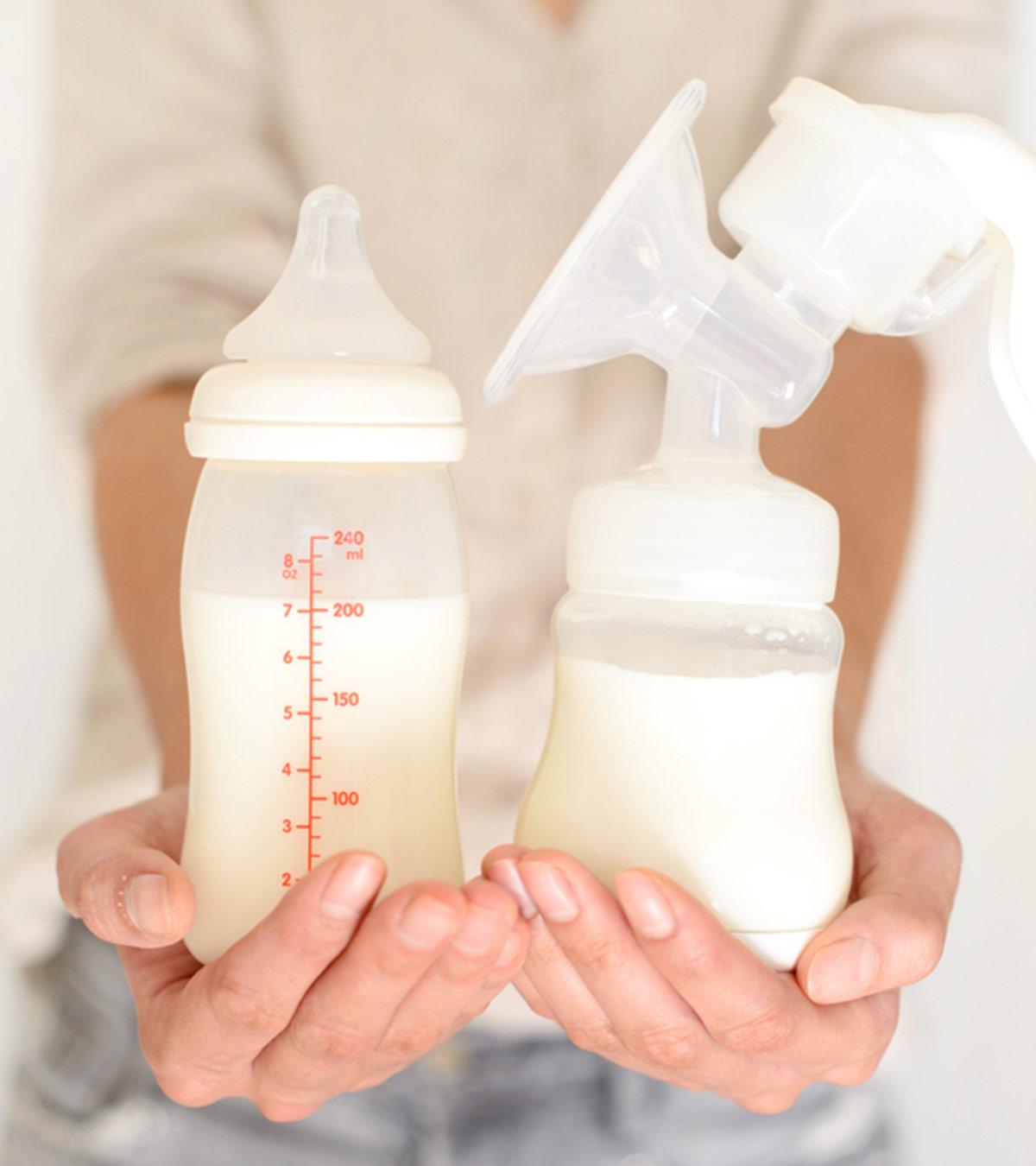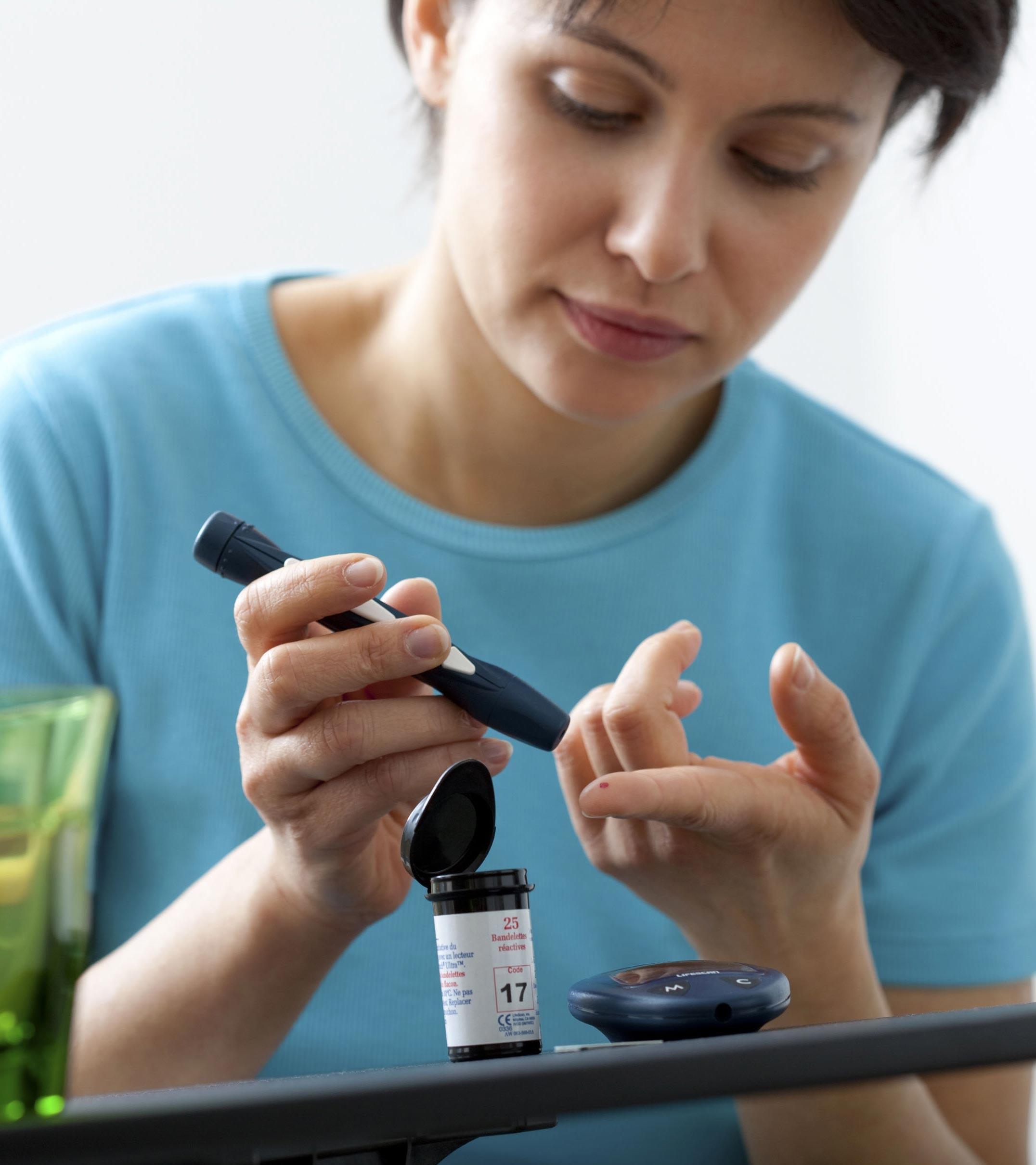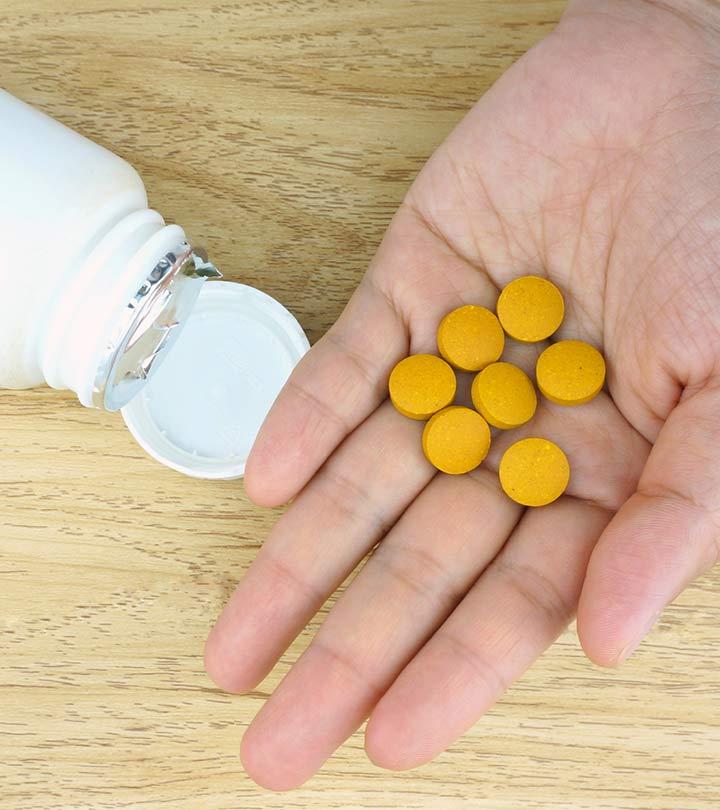
Image: iStock
Several women consider using herbs while breastfeeding to boost their milk production and supply. According to studies, herbs such as fenugreek, fennel, blessed thistle, and goat’s rue have galactagogue properties that may help maintain, promote, or induce milk production (1). However, their safety and efficacy for nursing mothers and their babies is inadequately researched. Thus, you should consult your healthcare provider before using herbs to avert any side effects.
Read on to learn the safety of herbs when breastfeeding, the herbs that may promote milk supply and those you should avoid, and precautions you should observe while using herbs when breastfeeding.
Key Pointers
- Several herbs are used as galactagogues in herbal remedies to increase breast milk production in lactating women.
- Common herbs used for this purpose include fenugreek, goat’s rue, fennel, anise, alfalfa, Shatavari, and garlic.
- On the other hand, herbs like sage, parsley, jasmine, and peppermint are known to decrease milk flow and are used by lactating mothers to stop milk production.
- There are no authorized safety guidelines for using herbs while breastfeeding, so it is advisable to use them in moderation to avoid adverse effects.
Is It Safe To Take Herbs While Breastfeeding?
The safety depends on the herbs you are taking. Herbs such as fennel and fenugreek may not be harmful if taken in small quantities, while herbs such as sage leaves and parsley may dry up the breastmilk.
Also, there is no conclusive research on the safety of herbs when breastfeeding (2). Herbal galactagogues are often considered safe by anecdotal accounts. Some herbs may be useful in increasing the supply of breast milk.
Herbs That May Help Increase Milk Supply
Herbs have been used as a traditional medicine to boost milk production in lactating women for generations in various cultures. Let’s see a few foods that increase breast milk (1) (4).
- Fenugreek: It is one of the most commonly used herbs while breastfeeding. Fenugreek is grown mainly in India, Mediterranean countries, and Southern Europe (3). It is often used in warmer cultures for people with sweating problems. Breasts are modified sweat glands, which is probably why it has an impact on the breast.
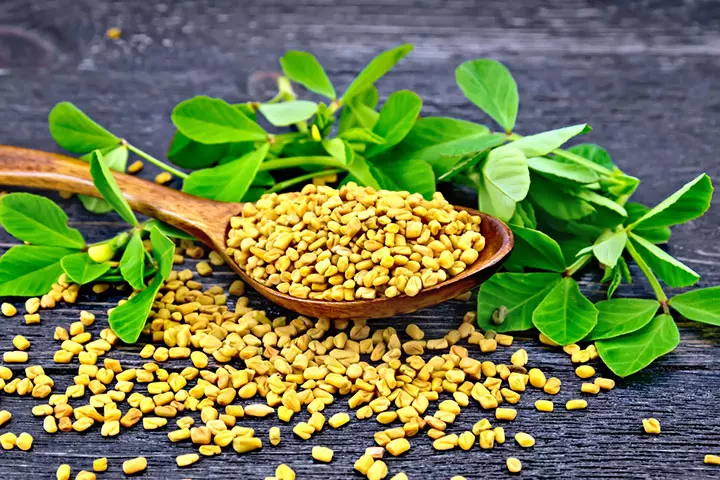
Image: Shutterstock
However, if taken in excess, it may cause nausea or vomiting in mothers and/ or diarrhea in babies. If taken in excessive quantities, it is known to have a hypoglycemic effect (reduction in blood sugar level) in mothers with diabetes. Also, it may not be suitable for women having asthma. Also, it may produce a maple syrup-like smell in baby’s or mother’s urine, sweat, or milk.
 Caution
Caution- Blessed thistle: Blessed thistle’s white veins in the leaf represent breast milk in several folklores. The herb is considered to benefit the liver as well. It may have a laxative effect or cause an allergic reaction.
- Goat’s rue: Found mostly in Central and Southern Europe, this herbaceous plant is used in many products in combination with other herbs (5). Its galactagogue effect was first reported in 1873 to the French Academy (6). It is also taken in combination with fenugreek and other herbs for a stronger effect. It should not be used fresh as it may cause toxicity. The dried form (dry leaves) is not known to have side-effects.
 Quick tip
Quick tip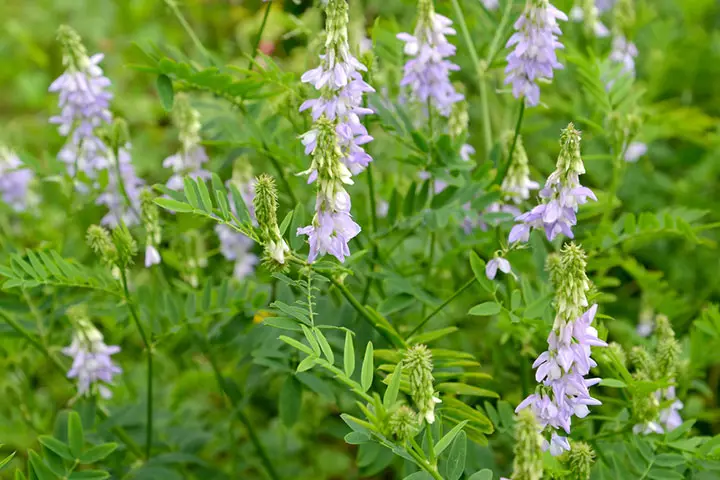
Image: Shutterstock
- Fennel: It has also been used for treating gastrointestinal disorders. Its galactagogue properties were first reported by a Greek botanist. Several midwives and lactating mothers recommend fennel for increasing milk supply. Since it is aromatic in nature, fennel is often added in regular meals in the form of seeds. It may cause allergic reactions or dermatitis.
- Aniseed/anise: It is an aromatic spice found in West Asia, Eastern Mediterranean, Mexico, and Spain. It may cause an allergic reaction in a few women.
- Alfalfa: A rich source of nutrients, its sprouts have a nutty flavor and are rich in estrogenic compounds. According to the American Pregnancy Association, alfalfa is often used in combination with fenugreek. However, it also acts as a laxative and may cause loose stool. Moreover, it is not recommended to people allergic to peanuts or legumes or having systemic lupus erythematosus.
 Point to consider
Point to consider
Image: Shutterstock
- Blessed thistle: It is used in alternative medicines and is known to have a positive effect on milk supply. The herb is commercially available in the form of tea or capsules. According to the American Pregnancy Association, it works best in combination with fenugreek. Generally considered safe, it may cause an allergic reaction in some.
- Shatavari: Its roots have been used in the ancient Indian medicine system (Ayurveda) as a galactagogue. The roots are often consumed in combination with cardamom. However, there is scarce literature available in modern medicine in terms of dosage, efficacy, or side effects.
- Garlic: It is widely used as a culinary ingredient around the globe. It has been observed that the intake of garlic may increase the nursing time because of the milk odor. However, if your baby doesn’t like the peculiar garlic odor, the result may reverse too.
- Torbangun: The leaves of the torbangun plant, also known as Spanish thyme and Indian borage, have been used as a galactagogue in indigenous communities of Indonesia for ages. Research indicates the herb can boost breast milk production up to one month from the last date of supplementation. The herb is noted not to affect or alter the nutritional composition of the breast milk (7).
Herbs To Avoid While Breastfeeding
Some herbs can have an adverse effect on breast milk supply as they dry up the milk. Such herbs may be avoided by lactating mothers. However, women with hypergalactia or those trying to wean a toddler may want to use them. Hypergalactia means an overabundance of milk supply (8).
Below is a list of herbs that may reduce breast milk production (9) (10) (11).
- Sage leaves: It is consumed in the form of tea made from the extract of its leaves. In addition to drying up breast milk, it may cause nausea, vomiting, or dizziness and some other side effects in patients with asthma, diabetes, or seizures.
- Parsley: It may decrease milk supply and lower prolactin levels in breastfeeding women, when consumed as a food. Usually, women who want to control or stop milk production, take these in the form of capsules in combination with sage. However, there is no clinical evidence to verify its effects.
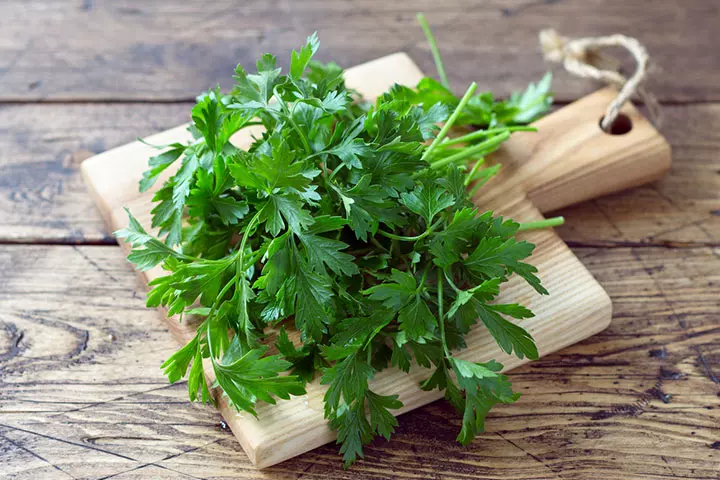
Image: IStock
- Jasmine: Its leaves applied topically on breasts may suppress milk supply. It is generally regarded as safe by the US Food and Drug Administration. However, there is a scarcity of information on its dosage, effectiveness, and side effects.
- Peppermint: Its oil is believed to reduce milk supply, reduce pain, and treat cracked nipples in breastfeeding women. However, it may be toxic when applied topically in high doses.
 Did you know?
Did you know?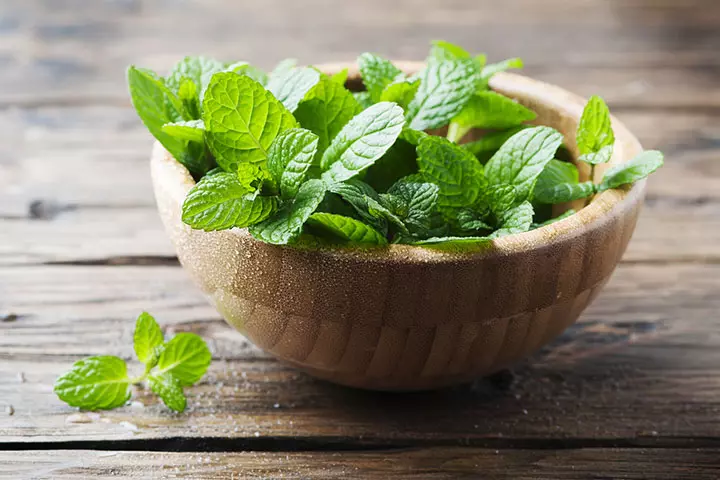
Image: Shutterstock
There is a lack of regulation on natural and herbal products, and thus it is good to exercise caution while using herbs.
Precautions While Using Breastfeeding Herbs
If you plan to have herbs while breastfeeding, then first discuss it with your healthcare provider and the baby’s pediatrician. Consider the following points before having herbs while breastfeeding (12).
- There is no adequate information on the safety and effectiveness of most herbs used during breastfeeding, including some commonly available herbs such as nettle, anise, caraway, coriander, dill, red clover, and yarrow.
- The compounds found in herbs have the potential to pass into breast milk from where it can reach the infant’s body. The effects of the herb on the baby may not be known due to limited research.
- Some herbal products may not always follow GMP (good manufacturing practices), making the quality and purity of the product questionable. Therefore, select products made by reputed manufacturers.
Frequently Asked Questions
1. How long does it take for herbs to increase breast milk supply?
If a herb works for you, it may produce an increased breast milk supply in three to seven days (13).
2. Can I take more than one herb at a time to increase my breast milk supply?
You may use a combination of herbs to increase your breast milk supply. However, trying them one at a time is advisable to identify efficacy, drug interactions, and potential side effects (13).
3. How do I know if I need to take herbs to increase my breast milk supply?
You may need to improve your breast milk supply if your baby gets less than six to eight wet diapers in 24 hours, passes hard stools, has a problem sleeping, does not gain birth weight by two weeks, or does not gain about 150g or more every week for the first three months (14).
4. Are there any herbs that can help with postpartum depression while breastfeeding?
Herbs such as St. John’s wort (Hypericum perforatum), Ginkgo biloba, Crocus sativus, Lavandula angustifolia, and Rhodiola rosea may help with postpartum depression. However, they should be taken only after discussing with a doctor or an expert to avoid any harmful effects on the mother or baby (15).
5. Can herbs treat colic or other digestive issues in breastfed babies?
Some herbs such as fennel, chamomile, and lemon balm may help colic in babies. However, enough scientific evidence is not present to support their efficacy and safety in infants (16).
Natural or herbal products can easily be found in homes, supermarkets, and pharmacies. Many of these herbs, such as fenugreek, blessed thistle, fennel, aniseed, alfalfa, Shatavari, garlic, and others, have been used to enhance breastfeeding and have been passed down through generations as traditional or alternative medicine. However, the level of safety and effectiveness may differ for each person. Learning how to increase milk supply involves the proper use of some herbs. But, certain herbs, including parsley, jasmine, and sage leaves, should be avoided during nursing. Thus, before using any herb for breastfeeding improvement, speak with a lactation professional or a physician.
Infographic: Herbs To Use And Stay Away From While Breastfeeding
Many herbs are safe to use during breastfeeding and can provide numerous benefits for both the mother and baby, including an increase in breast milk supply. However, certain herbs can have negative effects as well. So, scroll through the infographic below to learn about herbs breastfeeding mothers should use and stay away from. Illustration: Momjunction Design Team
Illustration: Best Herbs To Increase Milk Supply When Breastfeeding

Image: Stable Diffusion/MomJunction Design Team
The experts in this video explain the amazing benefits of Ayurvedic herbs and supplements for lactation. Discover how they can help you increase your milk supply and nourish your baby.
References
- Tabares F. P. et al.; (2014); Pharmacological overview of galactogogues: Veterinary Medicine International 2014.
https://www.ncbi.nlm.nih.gov/pmc/articles/PMC4165197/ - Budzynska K. Gardner Z. E. Dugoua J. J. Low Dog T. & Gardiner P. Systematic review of breastfeeding and herbs: Breastfeeding Medicine 7(6) 489-503. (2012).
https://www.ncbi.nlm.nih.gov/pmc/articles/PMC3523241/ - Turkyılmaz C. Onal E. Hirfanoglu I. M. Turan O. Koç E. Ergenekon E. & Atalay Y. The effect of galactagogue herbal tea on breast milk production and short-term catch-up of birth weight in the first week of life: The journal of alternative and complementary medicine 17(2) 139-142. (2011).
https://www.liebertpub.com/doi/abs/10.1089/acm.2010.0090 - Nice F. J. Common herbs and foods used as galactogogues: ICAN: Infant Child & Adolescent Nutrition 3(3) 129-132. (2011)
https://journals.sagepub.com/doi/pdf/10.1177/1941406411406118 - Galactagogues – Boosting Your Milk Supply and Production: American Pregnancy Association. (n.d.).
https://americanpregnancy.org/healthy-pregnancy/breastfeeding/galactagogues-boosting-your-milk-supply/ - Dog T. L. The use of botanicals during pregnancy and lactation: Altern Ther Health Med 15(1) 54-8. (2009).
https://www.researchgate.net/profile/Seema_Puri2/publication/23930231_Diets_based_on_Ayurvedic_constitution–potential_for_weight_management/links/57583d6b08aed884620674f0/Diets-based-on-Ayurvedic-constitution–potential-for-weight-management.pdf - Rizal Damanik et al,; (2006); Lactagogue effects of Torbangun, a Bataknese traditional cuisine.
https://pubmed.ncbi.nlm.nih.gov/16672214/ - Eglash A. Treatment of maternal hypergalactia: Breastfeeding Medicine 9(9) 423-425. (2014).
https://www.ncbi.nlm.nih.gov/pmc/articles/PMC4216483 - Drugs and Lactation Database (LactMed). Parsley: National Center for Biotechnology Information. (2018).
https://www.ncbi.nlm.nih.gov/books/NBK501880/ - Drugs and Lactation Database (LactMed). Peppermint: National Center for Biotechnology Information. (2018).
https://www.ncbi.nlm.nih.gov/books/NBK501851/ - Drugs and Lactation Database (LactMed). Jasmine: National Center for Biotechnology Information. (2018).
https://www.ncbi.nlm.nih.gov/books/NBK501843/ - Herbal medicines and Breastfeeding: The Women’s The Royal Women’s Hospital. (n.d.).
https://www.thewomens.org.au/health-information/breastfeeding/medicines-drugs-and-breastfeeding/complementary-medicines-and-breastfeeding - Herbs and Foods to Increase Your Breast Milk Supply.
https://www.uwmedicine.org/sites/stevie/files/2018-11/Herbs-Foods-Increase-Your-Breast-Milk-Supply.pdf - How to increase breast milk supply.
https://www.pregnancybirthbaby.org.au/increasing-your-breast-milk-supply - Cindy‐Lee Dennis et al. Interventions (other than psychosocial psychological and pharmacological) for treating postpartum depression: Cochrane Database Systematic Review. 2019.
https://www.ncbi.nlm.nih.gov/pmc/articles/PMC6831364/ - Tu Mai et al. Infantile Colic New Insights into an Old Problem: Gastroenterol Clin North Am. 47(4): 829–844. (2018).
https://www.ncbi.nlm.nih.gov/pmc/articles/PMC6659398/# - Boosting Your Breast Milk Supply With Galactagogues.
https://americanpregnancy.org/healthy-pregnancy/breastfeeding/galactagogues-boosting-your-milk-supply/
Community Experiences
Join the conversation and become a part of our nurturing community! Share your stories, experiences, and insights to connect with fellow parents.
Read full bio of Melissa Kotlen
Read full bio of Swati Patwal
Read full bio of Rohit Garoo
Read full bio of Anindita Ghatak








